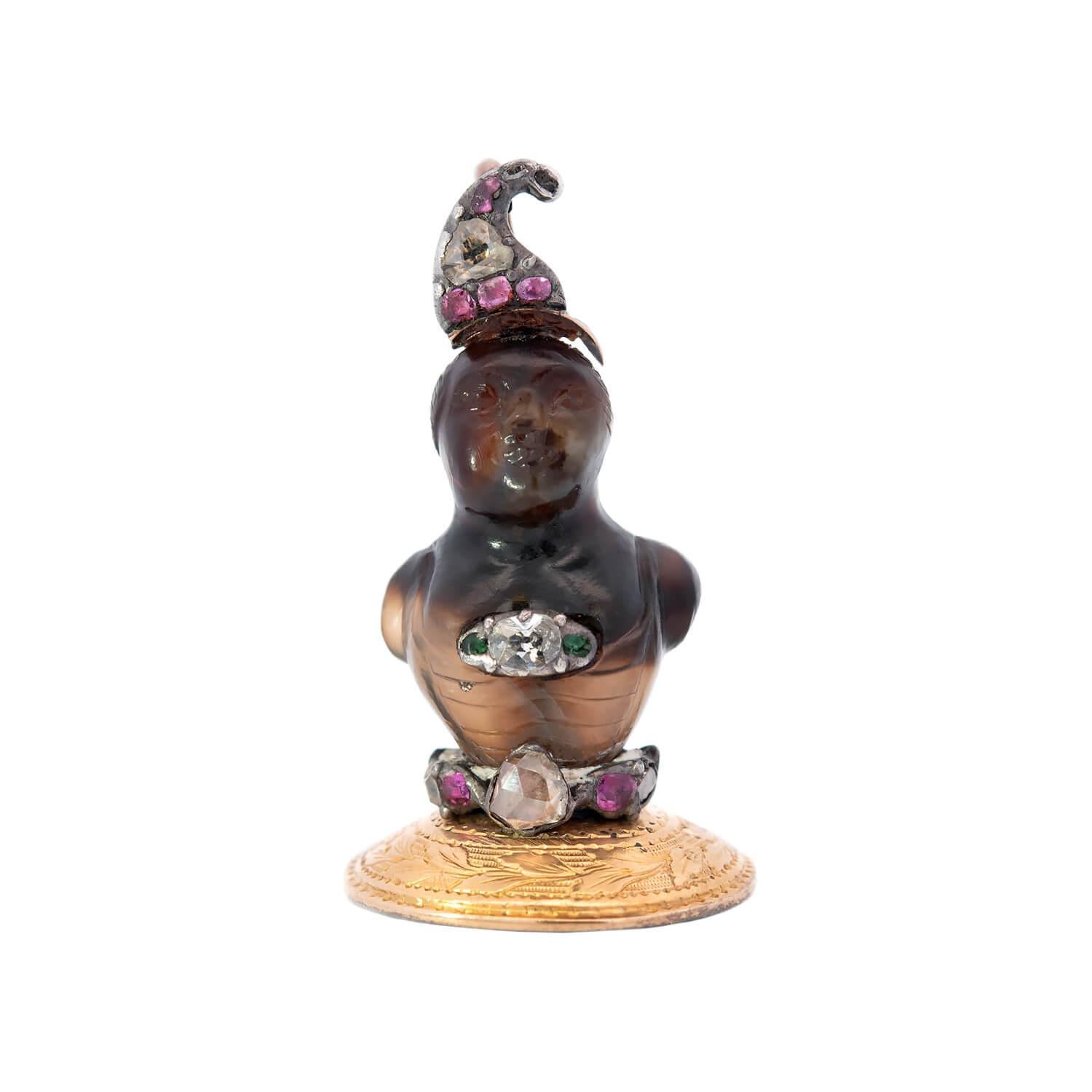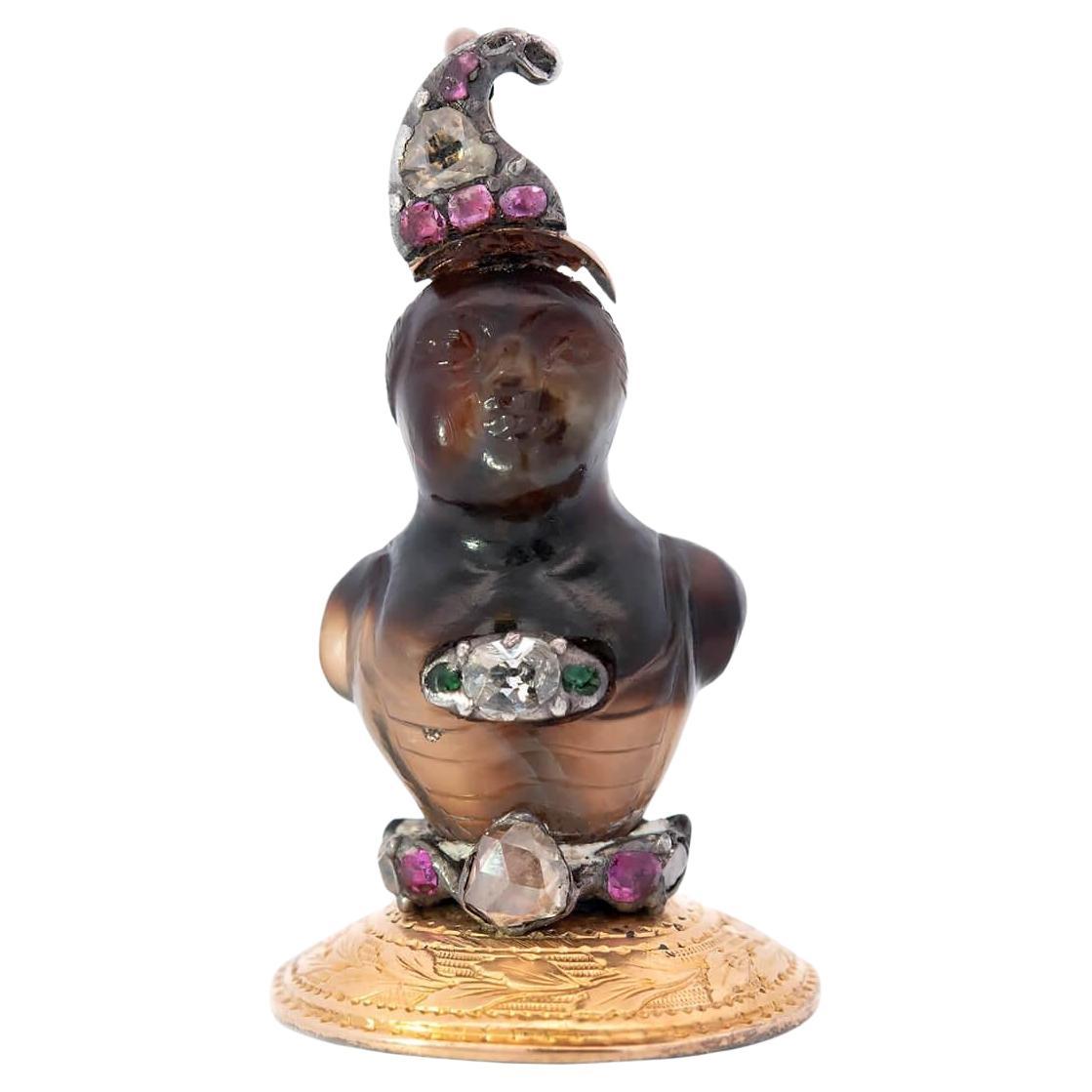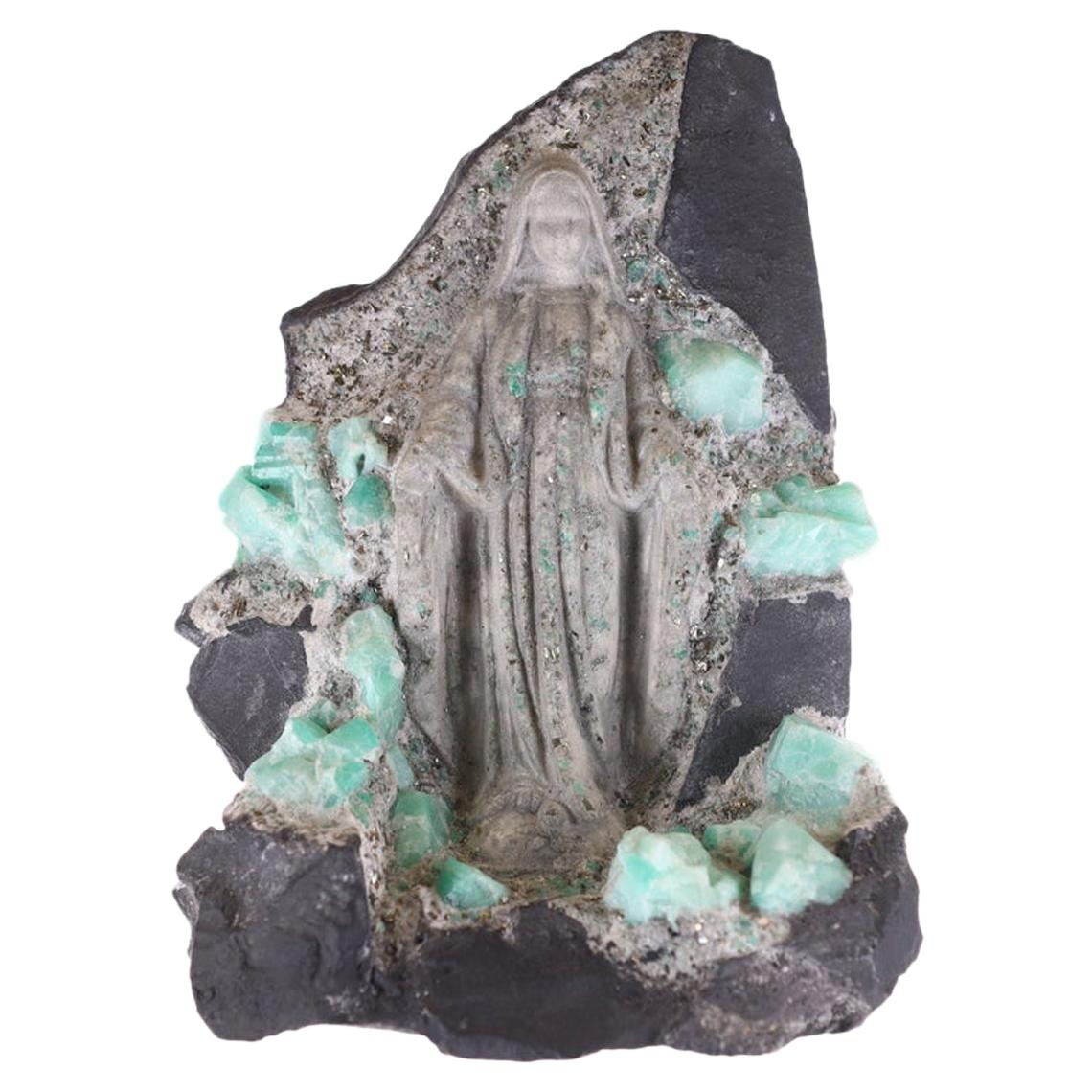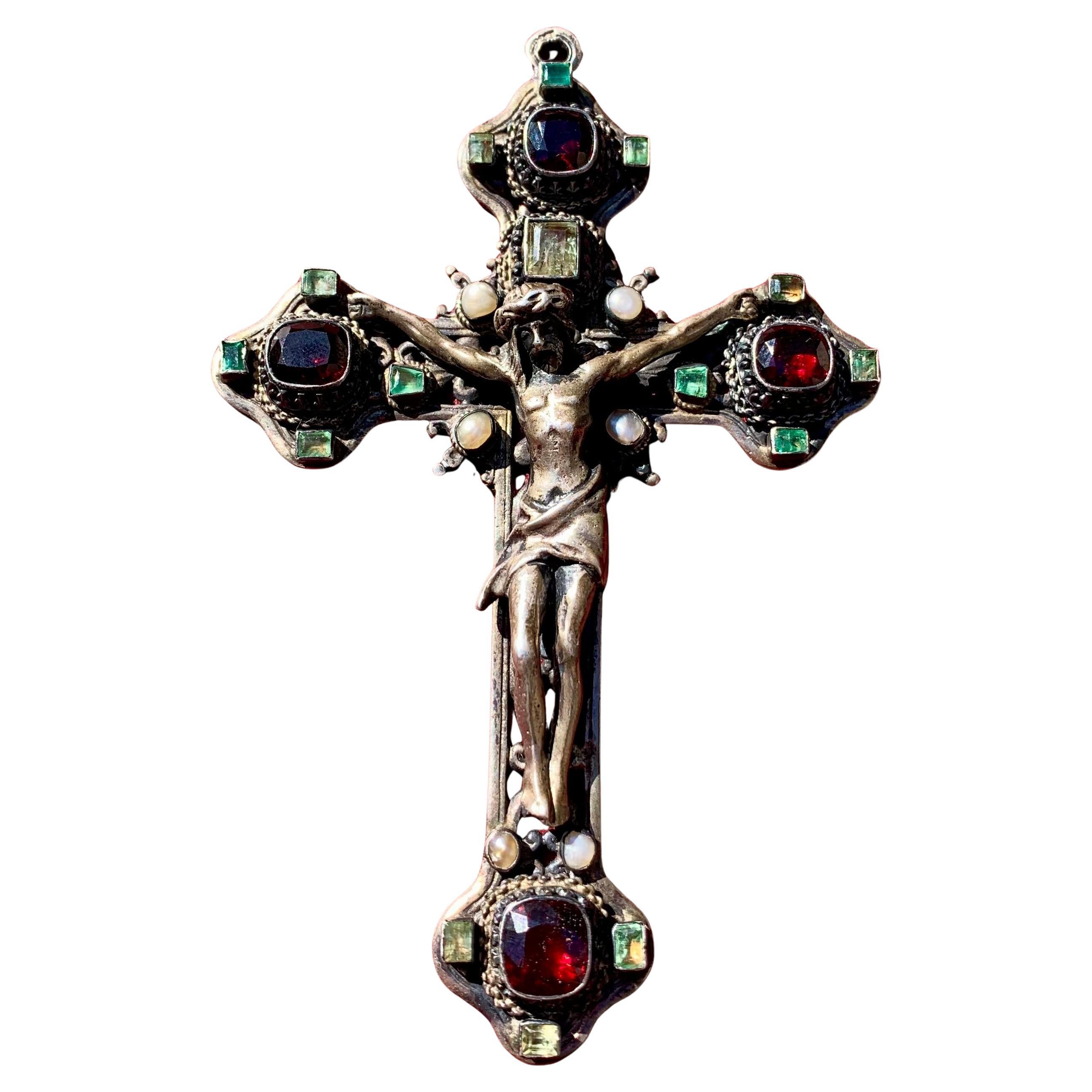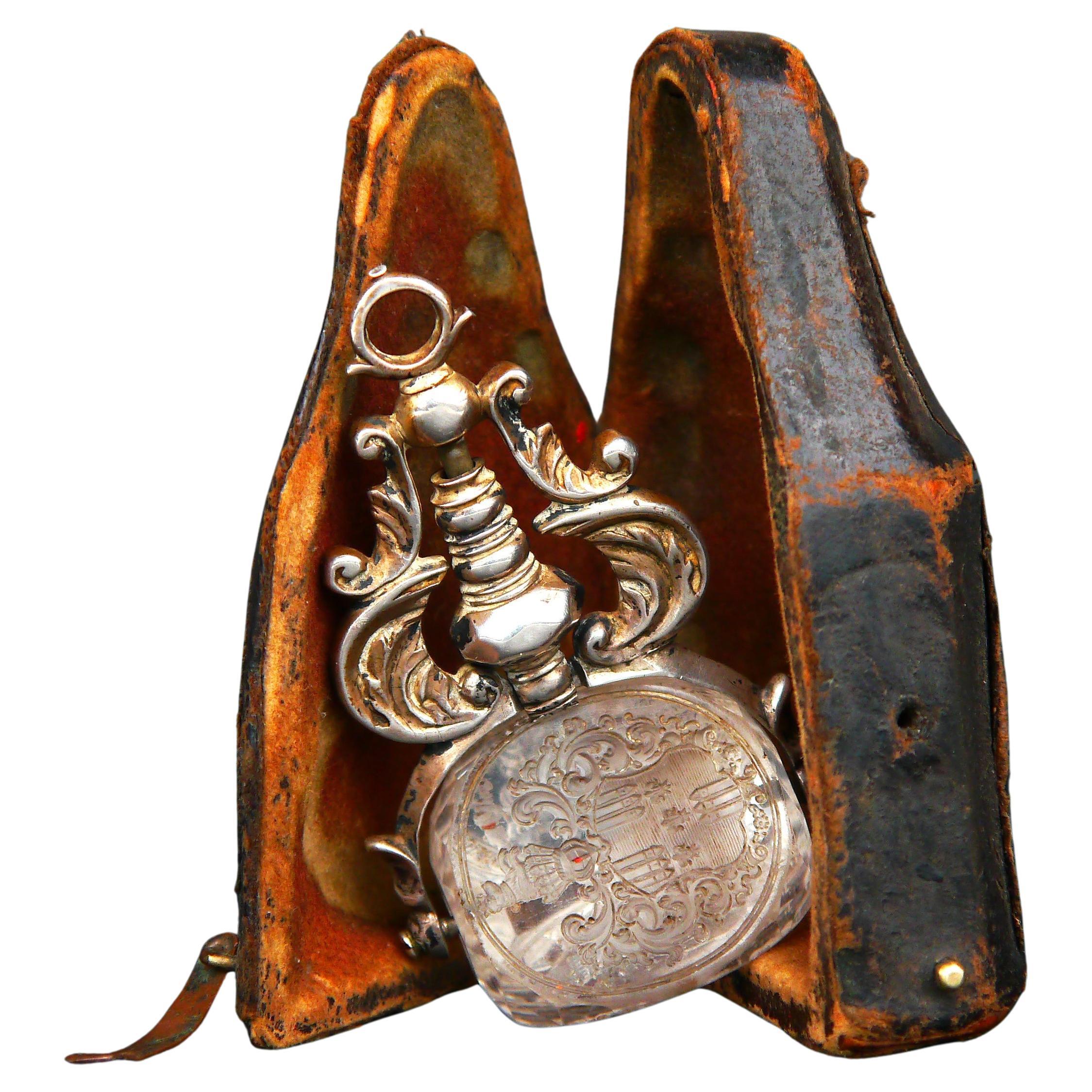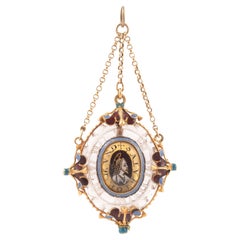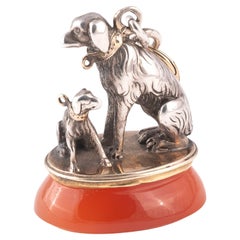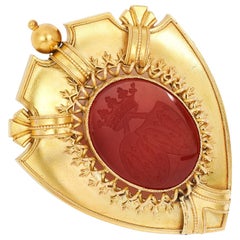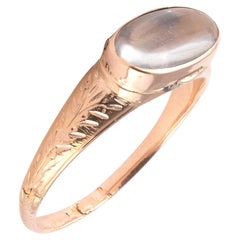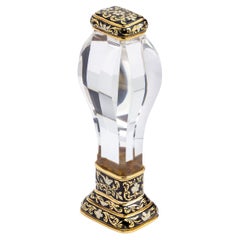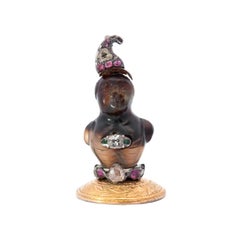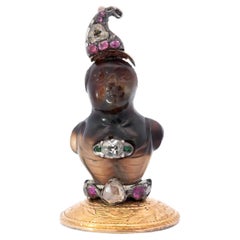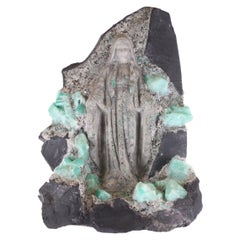Items Similar to Pope St. Gregory The Great Seal Crystal Ruby Rock Emerald Gold
Want more images or videos?
Request additional images or videos from the seller
1 of 5
Pope St. Gregory The Great Seal Crystal Ruby Rock Emerald Gold
$11,322.77
£8,384.44
€9,500
CA$15,570.50
A$17,318.40
CHF 9,064.08
MX$211,227.32
NOK 113,893.43
SEK 107,131.48
DKK 72,326.43
About the Item
The silver and gold sculpture depicting the Pope St. Gregory the Great in the act of blessing and with his pastoral stick, the magnificent dress set with emeralds and rubies, the back of the mantle wholly engraved, a feet lening on a rock crystal sphere. The sculpture is mounted on a round shape cabochon carnelian, the matrix engraved with a count crown. 4.6 cm high
- Metal:
- Stone:
- Stone Cut:
- Style:
- Place of Origin:
- Period:
- Date of Manufacture:1810's
- Condition:
- Seller Location:Firenze, IT
- Reference Number:1stDibs: LU12026635472
About the Seller
4.9
Recognized Seller
These prestigious sellers are industry leaders and represent the highest echelon for item quality and design.
Platinum Seller
Premium sellers with a 4.7+ rating and 24-hour response times
Established in 1890
1stDibs seller since 2010
926 sales on 1stDibs
Typical response time: <1 hour
- ShippingRetrieving quote...Shipping from: Firenze, Italy
- Return Policy
Authenticity Guarantee
In the unlikely event there’s an issue with an item’s authenticity, contact us within 1 year for a full refund. DetailsMoney-Back Guarantee
If your item is not as described, is damaged in transit, or does not arrive, contact us within 7 days for a full refund. Details24-Hour Cancellation
You have a 24-hour grace period in which to reconsider your purchase, with no questions asked.Vetted Professional Sellers
Our world-class sellers must adhere to strict standards for service and quality, maintaining the integrity of our listings.Price-Match Guarantee
If you find that a seller listed the same item for a lower price elsewhere, we’ll match it.Trusted Global Delivery
Our best-in-class carrier network provides specialized shipping options worldwide, including custom delivery.More From This Seller
View AllItalian Renaissance Early 17th Century Rock Crystal & Enemal Devotional Pendant
Located in Firenze, IT
In 18kt yellow gold with a triple chain suspending a carved rock crystal medallion surrounded by polychrome enamels which holds on one side a Salvator Mundi in enamels and on the oth...
Category
Antique Early 17th Century Italian Renaissance Pendant Necklaces
Materials
Rock Crystal, 18k Gold, Yellow Gold
A Large Silver Gold And Hardstone Fob Seal English Circa 1870
Located in Firenze, IT
The urn-shaped handle and cast and chased with two sporting dogs , the carnelian matrix without engraved.
English, circa 1870
Height 3cm
Weight: 14.40gr.
Category
Antique Late 19th Century British Victorian Figurines and Sculptures
Materials
Carnelian, Silver, Gold
Antique Carnelian Intaglio Family Crest Seal Brooch, 19th Century
Located in Firenze, IT
Shield design, set with oval carnelian, carved in detail with two coats of arms below a coronet, 5.7cm, 18.2g.
Category
Antique Late 19th Century British Victorian Brooches
Materials
Carnelian, Gold, 10k Gold
Rare Baroque 17th Century Gold & Rock Crystal Devotional Reliquary Ring
Located in Firenze, IT
Period: circa 1690
Ring size: 9.5
Weight: 1.69gr
L’anello, databile all’ultimo decennio del XVII secolo, si compone di un cristallo di rocca taglio cabochon il quale, sollevandosi...
Category
Antique 17th Century Italian Baroque Fashion Rings
Materials
Crystal, Rock Crystal, Gold, Yellow Gold
Late 17th Century Emerald Cameo Empress Berenice by Carlo Giuliano
Located in Firenze, IT
Mounted a pendant in 1st half 19th century by Carlo Giuliano On the back engraved the pyramids in Egypt Size of the cameo is 26mm x 20mm The pendant is long 43mm Carlo Giuliano (1831–1895) was a goldsmith and jeweller operating in London from 1860. He started work in Naples for Alessandro Castellani and was sent to London to establish a branch of the Casa Castellani. He left Castellani's employ in the early 1860's and in turn worked for Robert Phillips, Harry Emanuel...
Category
Antique Late 19th Century British Victorian Pendant Necklaces
Materials
Emerald, 18k Gold, Yellow Gold
Antique French Bloodstone Cameo Ring
Located in Firenze, IT
18Kt gold ring set with a cameo on bloodstone stylizing an emperor's head with a laurel wreath, the basket with twisted threads.
Finger size : 8
Top size is 21mm x 16mm
Weight : 7,...
Category
Antique 1870s French Napoleon III Signet Rings
Materials
Agate, 18k Gold, Yellow Gold
You May Also Like
18 Karat Gold, Carnelian, Rock Crystal & Enamel Desk Seal
Located in Brisbane City, QLD
This antique desk seal dates to the 19th Century and likely originated in France. The handle of the seal is a piece of polished and faceted rock crys...
Category
Antique 19th Century French Desk Accessories
Materials
Carnelian, Crystal, Rock Crystal, Gold, 18k Gold, Yellow Gold, Enamel
Georgian 14k Agate, Diamond, Ruby, and Emerald Carved Bust Seal Pendant
Located in Narberth, PA
A fantastic pendant from the Georgian era (ca1830)! Made of vibrant 14k yellow gold and carved agate, the pendant has a wonderful 3-dimensional design and depicts the bust of a man. The agate bust...
Category
Antique 1830s Georgian Pendant Necklaces
Materials
Diamond, Ruby, Gold, 14k Gold, Yellow Gold
Georgian 14k Agate, Diamond, Ruby, and Emerald Carved Bust Seal Pendant
Located in Narberth, PA
A fantastic pendant from the Georgian era (ca1830)! Made of vibrant 14k yellow gold and carved agate, the pendant has a wonderful 3-dimensional design and depicts the bust of a man. The agate bust...
Category
Antique 1830s Georgian Pendant Necklaces
Materials
Agate, Diamond, Ruby, Gold, 14k Gold, Yellow Gold
Colombian Emerald Virgen Mary Rough Crystal Sculpture
Located in Jupiter, FL
This is a beautiful and one-of-a-kind rough Colombian emerald sculpture. Featured is the most symbolic and holy woman in the Colombian, catholic church, the Virgen Mary...
Category
2010s Colombian Figurines and Sculptures
Large Antique High Renaissance Style Emerald Natural Pearl Garnet Silver Cross
Located in New York, NY
Exquisite museum quality large antique High Renaissance style emerald, natural pearl, garnet silver pectoral cross
19th century
Makers Mark: K.T. for Tauböck, Karl
Austro-Hungarian E...
Category
Antique 19th Century European Renaissance Religious Items
Materials
Silver
1676 Friedrich von Arenstorff Intaglio Fob wax Seal Rock Crystal Silver
Located in SE
Unique 17th century fob pendant in silver mount with 3 seals carved in solid rock crystal,in original wood and leather case box that used to belong to Friedrich von Arensdorff (1626–...
Category
Antique 1670s Danish Baroque Vanity Items
Materials
Crystal, Rock Crystal, Silver

